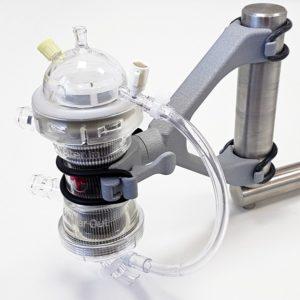 Materialise is one of those companies that seems to be involved in just about every industry – as long as that industry has something to do with 3D design or printing, which is pretty much every one these days. The company’s reach has extended to projects and applications in fashion, medicine, automotive, archaeology, education, art – and that’s just in the last couple of months. Materialise is a 3D technology authority, and it’s not surprising to learn that they’ve played a large role in introducing other businesses to the technology as well.
Materialise is one of those companies that seems to be involved in just about every industry – as long as that industry has something to do with 3D design or printing, which is pretty much every one these days. The company’s reach has extended to projects and applications in fashion, medicine, automotive, archaeology, education, art – and that’s just in the last couple of months. Materialise is a 3D technology authority, and it’s not surprising to learn that they’ve played a large role in introducing other businesses to the technology as well.
 England’s Bennett Engineering Design Solutions was established in 1999, but their involvement in 3D printing began only within the last few years. Director John Bennett and Mechanical Design Engineer Craig Harbron first encountered the technology when they were invited to attend an introductory seminar on 3D printing at the University of Sheffield Advanced Manufacturing Research Centre (AMRC) around the end of 2013. At first, Harbron tells us, they weren’t too impressed by what they were seeing.
England’s Bennett Engineering Design Solutions was established in 1999, but their involvement in 3D printing began only within the last few years. Director John Bennett and Mechanical Design Engineer Craig Harbron first encountered the technology when they were invited to attend an introductory seminar on 3D printing at the University of Sheffield Advanced Manufacturing Research Centre (AMRC) around the end of 2013. At first, Harbron tells us, they weren’t too impressed by what they were seeing.
“This was later understood to be expected of FDM, once we learnt a lot more about the technologies,” he adds.
While FDM may not make the most glamorous first impression, an encounter with a representative from Materialise during one of the breaks persuaded Harbron and Bennett to learn more. The representative offered to provide a showcase of Materialise’s work with 3D printing, and Harbron and Bennett agreed to a series of meetings that would ultimately result in a whole new direction for Bennett Engineering. After seeing the advancements Materialise had made with the technology, 3D printing suddenly looked a lot more promising, and the two companies formed a new partnership – a mentorship, of sorts, in which Materalise taught Bennett Engineering’s staff all about 3D printing, how it works, and what it can do.

Bennett Engineering and Materialise introduce 3D printing to partners and clients in a 2014 seminar. [Image: Bennett Engineering]
“The most common material we use is Alumide, an aluminium and nylon based material from Materialise to produce a whole range of items from covers, handles, holders and clamp,” Harbron told 3DPrint.com. “Some of these our products which we can supply and others are designs for clients as these provided freedom to design in terms of flexibility to include complex geometry, they provided improved aesthetics to fabricated steels or machined plastics while in most cases more cost effective.
“We have recently produced a 1 off finished product for a client using Stereolithography that was sanded and painted that turned out better than anyone could have expected, included the client and end user. There is now a very high chance a number of these products and customised one will be produced.”
It’s a great example of how quickly 3D printing can change a company: Bennett Engineering went from having little interest in or knowledge about 3D printing to creating a thriving new 3D business in no more than a year. Their clients are pleased, and the services Bennett Engineering now offers are prime examples of what 3D printing can achieve that other manufacturing technologies cannot – such as the repair and replication of obsolete parts.
It’s always interesting to learn about how individual companies, particularly long-established ones, came to embrace 3D printing. Perhaps Bennett Engineering will inspire – or already has inspired – another company to begin exploring the technology as well. Discuss further over in the Bennett Engineering & 3D Printing forum at 3DPB.com.
Subscribe to Our Email Newsletter
Stay up-to-date on all the latest news from the 3D printing industry and receive information and offers from third party vendors.
You May Also Like
3D Printing Financials: Fathom Struggles in Financial Quicksand During Critical Transition
Facing a year of key transitions and financial pressures, Fathom (Nasdaq: FTHM) has filed its annual report for 2023 with the U.S. Securities and Exchange Commission (SEC). The document outlines...
Latest Earnings Overview for Australian 3D Printing Firms Titomic and AML3D
Australian 3D printing manufacturing firms Titomic (ASX: TTT) and AML3D (ASX: AL3) reported their financial results for the period from July to December 2023, marking the first half of their...
3D Printing Webinar and Event Roundup: April 7, 2024
Webinars and events in the 3D printing industry are picking back up this week! Sea-Air-Space is coming to Maryland, and SAE International is sponsoring a 3D Systems webinar about 3D...
3D Printing Financials: Unpacking Farsoon and BLT’s 2023 Performance
In the Chinese 3D printing industry, two companies, Farsoon (SHA: 688433) and Bright Laser Technologies, or BLT (SHA: 688333), have recently unveiled their full-year earnings for 2023. Farsoon reported increases...
































